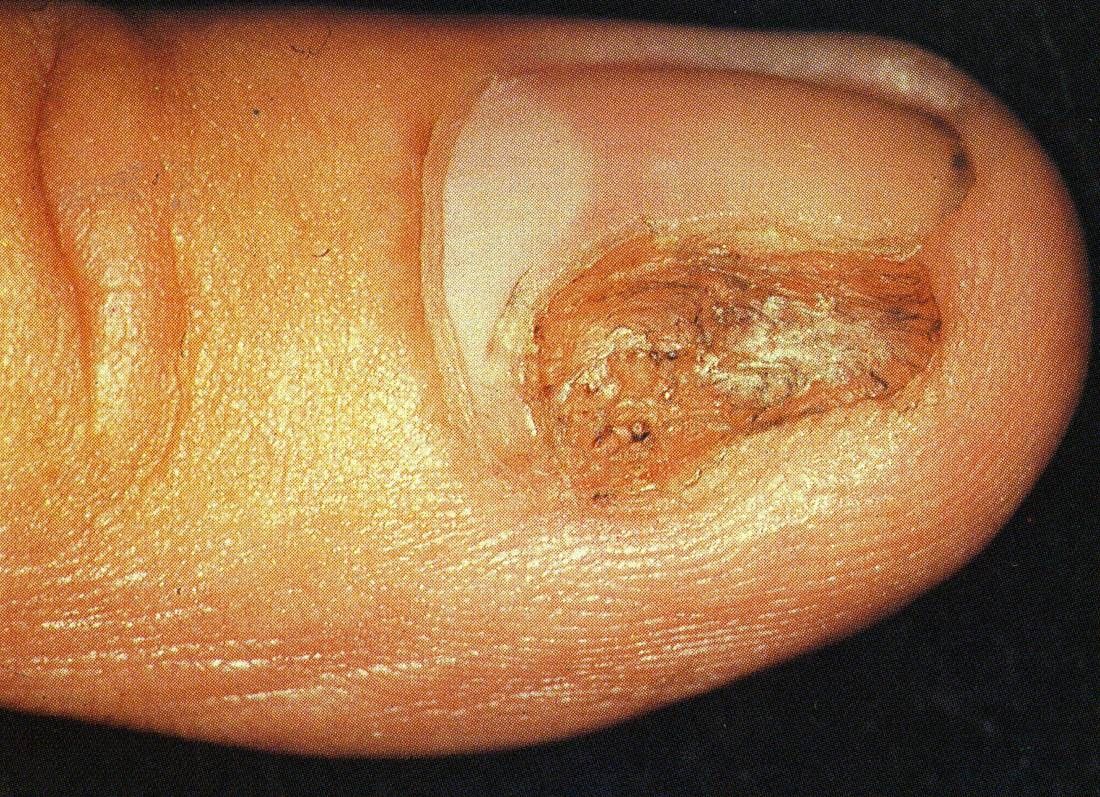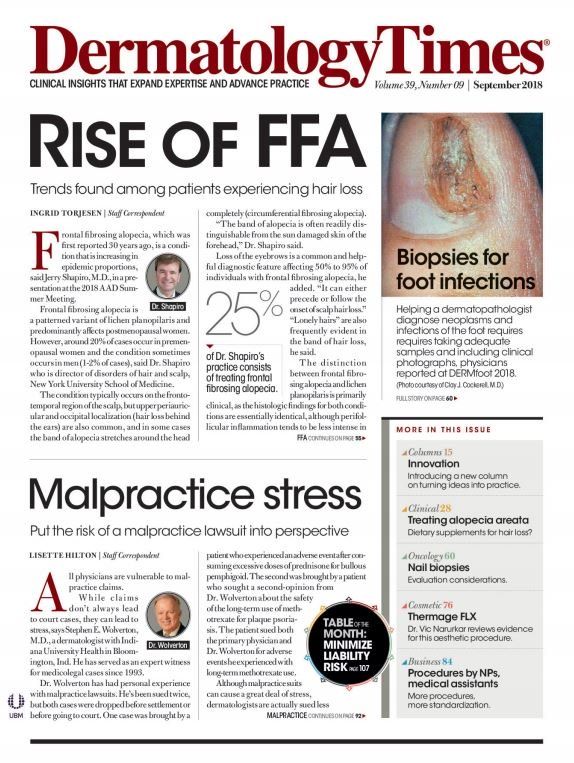- Case-Based Roundtable
- General Dermatology
- Eczema
- Chronic Hand Eczema
- Alopecia
- Aesthetics
- Vitiligo
- COVID-19
- Actinic Keratosis
- Precision Medicine and Biologics
- Rare Disease
- Wound Care
- Rosacea
- Psoriasis
- Psoriatic Arthritis
- Atopic Dermatitis
- Melasma
- NP and PA
- Skin Cancer
- Hidradenitis Suppurativa
- Drug Watch
- Pigmentary Disorders
- Acne
- Pediatric Dermatology
- Practice Management
- Prurigo Nodularis
- Buy-and-Bill
Publication
Article
Dermatology Times
Mastering the nail biopsy
Author(s):
Helping a dermatopathologist diagnose neoplasms and infections of the foot requires not only taking adequate samples, but in many cases, sending clinical photographs with them.
Helping a dermatopathologist diagnose neoplasms and infections of the foot requires not only taking adequate samples, but in many cases, sending clinical photographs with them. (Photo courtesy of Clay J. Cockerell, M.D.)

Helping a dermatopathologist diagnose neoplasms and infections of the foot requires not only taking adequate samples, but in many cases, sending clinical photographs with them, physicians reported at DERMfoot 2018.
"When we see patients in the clinic," said Dallas-based dermatopathologist Clay J. Cockerell, M.D., "we formulate one set of diagnoses. When we see things under the microscope, we might formulate something else." Especially when dealing with lesions of the nail unit presenting as a pigmented band, photographs can show whether the lesion involves the proximal nail fold â the Hutchinson’s sign â and whether it is broader at the base than distally. This 'Christmas tree' sign indicates that it very likely melanoma."
When physicians encounter nail issues, "they may not be as enthusiastic about dealing with them as podiatrists may be. Dermatologists as a general rule don't like to take biopsies of the nail unit, as they are difficult to prepare for and require a special setup. Nail biopsies can slow down the pace of your clinic, and the procedure is painful and inconvenient for the patient.”
However, he said, a biopsy is required in some cases, especially if a condition has not responded well to therapy in a reasonable period of time. Problems impacting just one nail also represent red flags.
When assessing potential cancers such as melanoma or squamous cell carcinoma, “don't get cavalier. Sometimes you have to bite the bullet and take a full-thickness biopsy of the nail unit even though it might be inconvenient. We've seen a number of tragic cases over the years in which the biopsy was delayed, resulting in poor outcomes and sometimes lawsuits.”
In one case, a female patient in her 30s had been seen by a podiatrist and a dermatologist for long-standing nail dystrophy. "She was treated with topical soaks for the nail and was given antifungal preparations," he said. One of her doctors eventually submitted a nail clipping for pathology.
The clipping revealed nothing remarkable, and the patient was instructed to continue treatment as usual. "Finally, when the nail plate eventually fell off, the physician took a biopsy of the underlying nail unit epithelium. Unfortunately, it revealed the presence of melanoma. "
When performing a biopsy of a possible melanoma, get into the nail matrix, which is proximal in the nail unit. If you take just a clipping or something off the distal end of the nail, you're not going to get the appropriate material in the vast majority of cases."
A larger, deeper biopsy eventually revealed a large, thick amelanotic melanoma. “The lesson in this case is that if something in the nail doesn't act right, consider getting a biopsy sooner rather than later – probably within a couple months. Don't wait a couple years."
Being unable to diagnose a challenging disease from an adequate biopsy is one thing, “but if you're hindered from making the diagnosis because of the way the biopsy was taken, that's a tragedy for the patient, dermatologist and dermatopathologist. If you're going to do a biopsy, it has to be a home run from the beginning â make absolutely certain that you're doing it right. Get plenty of tissue, and every biopsy should be sent to someone who knows what they're looking at under the microscope."
Those who don't routinely practice dermatopathology probably won't be comfortable interpreting nail biopsies. “This is not something that a general pathologist should generally interpret because they are not seeing enough of these biopsies, which can be very complicated to diagnose properly," Dr. Cockerell said.
Another case involved a 39-year-old male who had been treated with antifungal medication for three years. A nail unit biopsy in Dr. Cockerell’s clinic revealed a squamous cell cancer that was causing longstanding nail dystrophy.
When tumors or inflammatory diseases such as pemphigus, psoriasis or lichen planus cause nail dystrophy, the changes may be relatively non-specific and can simulate one another. "Biopsying the nail unit will tell you what's causing that dystrophy. However, the biopsy needs to be done properly and the nail matrix will often need to be sampled. Nail clippings will usually not be diagnostic."
To perform a proper nail unit biopsy, the patient is given a digital block; a tourniquet is used to control bleeding; and special instruments are needed to split or remove the nail plate.
Dermatologists are trained to perform nail unit biopsies in their residency programs, he said. "If you live in a community where there's somebody who knows how to take a nail biopsy and can do it relatively quickly and easily, you can always refer to them. But dermatologists should know how to do it, and it's not that difficult. Probably the biggest problem is that it takes time. Dermatologists are busy, seeing lots of patients today, and nail biopsies can throw a monkey wrench into the works. If your patient needs it, however, either refer him or her to someone, or reschedule the patient for the procedure â somewhat like having them come back for a complicated surgical procedure." He noted that in some areas, dermatologists refer patients to dermatologic surgeons for nail unit biopsies.
REFERENCE
Clay J Cockerell, MD. The Importance of Clinicopathologic Correlation in Skin Disorders of the Lower Extremity," DERMfoot. April 14, 2018.






